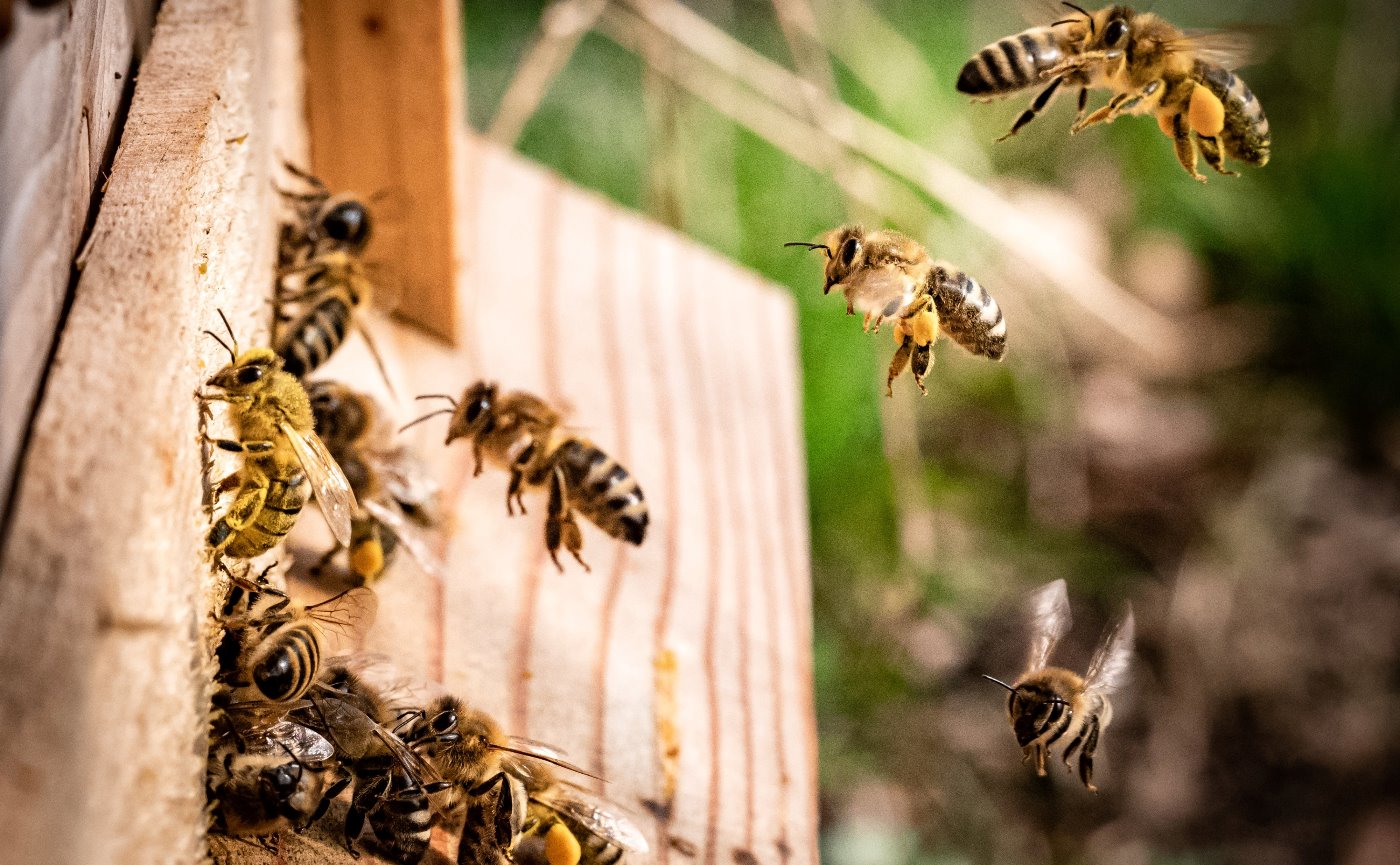Most animals communicate with one another through sound, body movements or skin color for alerting about threats or signaling about food sources. These are complex communication mechanisms, but is it language?
Animal language is not easy to decipher. And even if there were a dictionary for animal language, would we be able to understand the animals? It is widely believed that animal communication is an effective sensory language for communicating fear, excitement, anger, and danger.
Animals certainly transfer information between them in an attempt to influence the behavior of the recipient. But can this be defined as language?
The survival of a hive depends on effective communication between bees, and even centuries ago, beekeepers noticed the waggle dance of the bees and estimated that it is intended for communication purposes. The German biologist Karl Von Frisch characterized the language and orientation of the honey bee and was even awarded the Nobel Prize in 1973 with two other scientists for his discoveries. Von Frisch recognized that the waggle dance provides information about the distance and the azimuth related to the sun indicating the location and the quality of the nectar. However, some scientists disagree, claiming that the waggle dance only releases pheromones that direct the bees to the nectar and has nothing to do with language at all.
Researchers have found that some apes have certain warning words indicating specific threats that triggers certain behaviors of the group. For example, the group’s behavior after uttering a unique sound causes them to hide high up in the trees in case of ground threats, such as a tiger emerging from the ground, and a different unique word triggers the group to hide under bushes from predators, such as vultures. But even these examples do not provide enough evidence of the existence of a complex language. This type of communication deals with the here and now, acting as drill instructions generating a repetitive reaction and nothing more.
Some animals communicate via sounds not heard by humans. Elephants, for example, are sensitive to very low-frequency sounds and ground vibrations transmitted over very long distances. Low sound frequencies can travel over a distance of approximately ten kilometers and vibrations for even longer distances. As elephant groups cover long distances in search of food and water, they signal to other groups via low frequency sound and vibrations to divide their habitats.
Training dolphins for shows involves learning dozens of complex signs to perform stunts. The instructors teach the dolphins a complex sign and sound language that indicate high intelligence and impressive memory. Dolphins can identify a quite long sequence of instructions and are even able to discern fine changes in the order of instructions and react by changing the order of the stunt. Here, too, high intelligence is observed, but that does not mean that they use complex language in their natural environment beyond their survival needs.
During the 1950s, Keith and Katherine Hayes began a language experiment with a chimpanzee named Viki. Viki grew up with the Hayes’ children as if she was a human baby, but after about four years, Viki’s vocabulary included only four words. One of the discoveries later on was that the chimpanzee’s speech organ structure was inadequate and that chimpanzees have a neurological condition similar to aphasia in humans that does not allow chimpanzees to speak like humans. Animals may develop complex and rich thought, but are unable to express it. However, there are some sign languages that do not involve speech, and so in 1972 Dr. Penny Patterson began the famous experiment with the gorilla Koko. Patterson knew that Koko couldn’t speak so she began teaching her American Sign Language to prove that animals have complex language capabilities even when lacking the mechanics needed for speech.
And, indeed, such experiments have shown that some apes, such as chimpanzees and gorillas, can be taught to communicate using sign language. A chimpanzee named Washoe was able to combine signs to form complex and original phrases, such as “please open fast”. And the Gorilla Koko was able to understand about 1,000 signs and 2,000 words in English. She signed about a pet cat she loved who had died, demonstrating the ability to talk about non-existent things. However, we have to remember that both Washoe and Koko used human-developed languages rather than their own natural language. They couldn’t tell someone what they ate yesterday, if it tasted good and they couldn’t gossip either.
A common communication between humans and animals is found with man’s best friend, the dog. Shepherd dogs are able to respond impressively to instructions, transporting herds efficiently. They are able to receive the same instructions by words or whistles (which may even make them bilingual) and for some unclear reason, whistles seem more effective than words. But, although instructions can be given to dogs, they will not understand if we tell them what we ate and if it was tasty.
Language is a very complex mean of communication that probably requires brain capabilities and intelligence that do not exist in animals. Human language does not only differ in that we have more signs/words than animals. Complex language requires the following components:
- Language includes a finite set of elements, such as voices, letters, or movements that can be combined into an infinite channeling of ideas.
- Language has a set of rules, vocabulary, which determines how to integrate the elements.
- Language has the ability to convey productive and complex messages.
- Language can be used to talk about imaginary and abstract things.
It seems that animal communication does not encompass these four principles. Animals mostly communicate about things of the present – the animal language is emotional and automatic (danger of predator, size and shape, food sources, etc.), involving repetitive signs/sounds. In addition, humans seem to have this amazing need to collaborate, interact and share using language.
Although some language components can be identified in animals, not all four language components are found, and the impressive capabilities of Washoe and Koko do not even match the level of a three-year-old toddler.
Humans are able to use a finite number of elements to generate an infinite number of messages. Complex sentences and ideas that did not exist before can be formulated and expressed. We use language to talk about endless topics and imaginary worlds and even lie. Even this article includes sentences that have not been said before, but at the same time the reader has no problem understanding them. In contrast, the animal language is monotonous and consists only of repetitive signs/sounds.
The Turing Test is a method to test if a machine/computer exhibits a human intelligent behavior. The Turing Test does not answer the question of whether computers can think/talk, it answers the question of whether a computer can exhibit the illusion of talking to a person rather than a machine. Using the Turing Test on animals, it’s probably not possible to talk to a chimpanzee and have the illusion as if speaking to another person – maybe the illusion of talking to a toddler. But, on the other hand, the machine never really understands; it only creates the illusion of understanding. However, a chimpanzee probably does understand the limited language it was taught. Despite the huge differences, there are nonetheless similarities between the human language and the animal language and perhaps this is part of a communication continuity that exists in all animals with the humans being on the most advanced end of the continuum.
Unlike any other creature, humans can learn and understand without having actually experienced what they are learning about by imagining themselves in other people’s place. Imagination is a unique human capacity to envision that which is not and, therefore, is the foundation of all inventions and innovations. In this sense we are completely different from animals and this is what creates the language gap. Scientists may not yet have deciphered the language of animals. Animals may have a complex language system that expresses more than the here and now, but after a century’s exploration it seems that although many animals have rich communication mechanisms and may even have deep thoughts, they do not appear to have sufficiently complex language to convey versatile and rich thought like us humans.















